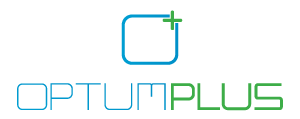Since my days as a Designer and now as a Management consultant at Optum+, wherein I project manage projects, I have heard the refrain from designers of both exterior and interior environments: “oh if these restrictions and problems were not there we would have come up with a great design.” I have to admit I too have made this remark in the past. However over the years I realised the hard way that all the sweat and brain crunching to get around restrictions and work around problems have produced some of my most interesting design and products.
Take for example the development project in Vancouver for instance known as the Vancouver House currently one of the world' most talked about real estate projects, prompted by Westbank here in beautiful wet-wet British Columbia. The Vancouver Sun on Sunday had a four page ad on the project which is designed by the accomplished young architectural firm Bjarke Ingels Group (BIG), based in Copenhagen and New York, Vancouver House is scheduled for completion in 2018
The project revolves around the “key concept here is taking the idea of the total work of art to a whole new scale – applying this philosophy to solve problems and create opportunities for enlightened city-building” as exhorted on Gesamtkunstwerk: The Philosophy behind the concept for the building.
As noted by many and indicated in the Georgia Strait article that this particular site below the Grandville bridge was a difficult site and has been seven years in the making due to its restriction and issues of zoning etc. as the Westbank site indicates it “make innovative use of a difficult parcel of land in the 1400 block of Howe Street. BIG has accommodated building restrictions on the site by designing a spectacularly torqued and cantilevered tower of condos and rental apartments, with a series of low-rise offices, retail units, galleries, and public amenities at and near its triangular base.
I am told many local architects have tried their hand at this site and have been unable to come up with a viable project. Ironically, it took an outsider and not a resident architect of Vancouver to come up with a concept that is not in line with Vancouverism, a term commonly used to describe this city’s urban-planning style and “tower and podium” architecture invented by architect James K.M. Cheng and copied by many.
The Vancouver House is an impressive solution to a difficult site to be completed in 2018 is an interesting engineering challenge to build incorporating Advanced Building Technology and meeting LEED Platinum Design Standards where Every home a Bjarke Ingels Original. No wonder it is one of the world' most talked about real estate projects!
Not knowing the details of the building method of such an impressive and challenging project and noting that its completion date is 2018, I am going to presume (stand to be corrected if required) that it is going to build in the traditional method of brick by brick, block by block.
Good Architecture and design in the digital globalized world is just bling, a passing trend to be unseated by another project that is better. Architecture has to rise above just good design and come of age as indicated in my earlier blog post on LinkedIn: What’s next for Architecture? Westbank with its Vancouver house project has an opportunity to be credited for another first and another step in innovation- innovative building - if it embarks on building this building using industrial design and turning the building into a product that will be manufactured offsite as components (Lego system approach) and assembled at site to be ready earlier than 2018.
Vancouver House is clear example of a work that besides its good architecture is the creative use of a land that was deemed by many as too restrictive to be developed well. A clear example of when restrictions and problems /issues are not hindrance to creativity. As Charles Eames once famously said: "design depends largely on constraints".
A methodology commonly referred to as Design Thinking which I make it a point to use in my profession as a budding Idea entrepreneur. Design Thinking is a proven and repeatable problem-solving protocol that any business or profession can employ to achieve extraordinary results brought into play by IDEO for product development and now has wormed its way into the board rooms of the digital globalised world and become and common lexicon. Issue; problems and restrictions are just stepping stones to creativity. It needs and openness of mind and a willingness to learn and ask. One of the methods as listed by The Fast Company article on Design Thinking is:
1: Define the problem
2: Create and consider many options
3: Refine selected directions
3.5 Repeat (optional)
4: Pick the winner, execute
I hope “Design Thinking” enables you to rise above the issues, problems and restriction to unleash creativity and innovation in design, business or herald social change. Read more about it on: “Design Thinking” in Harvard Business Review and let me know what you think, I look forward to it.

